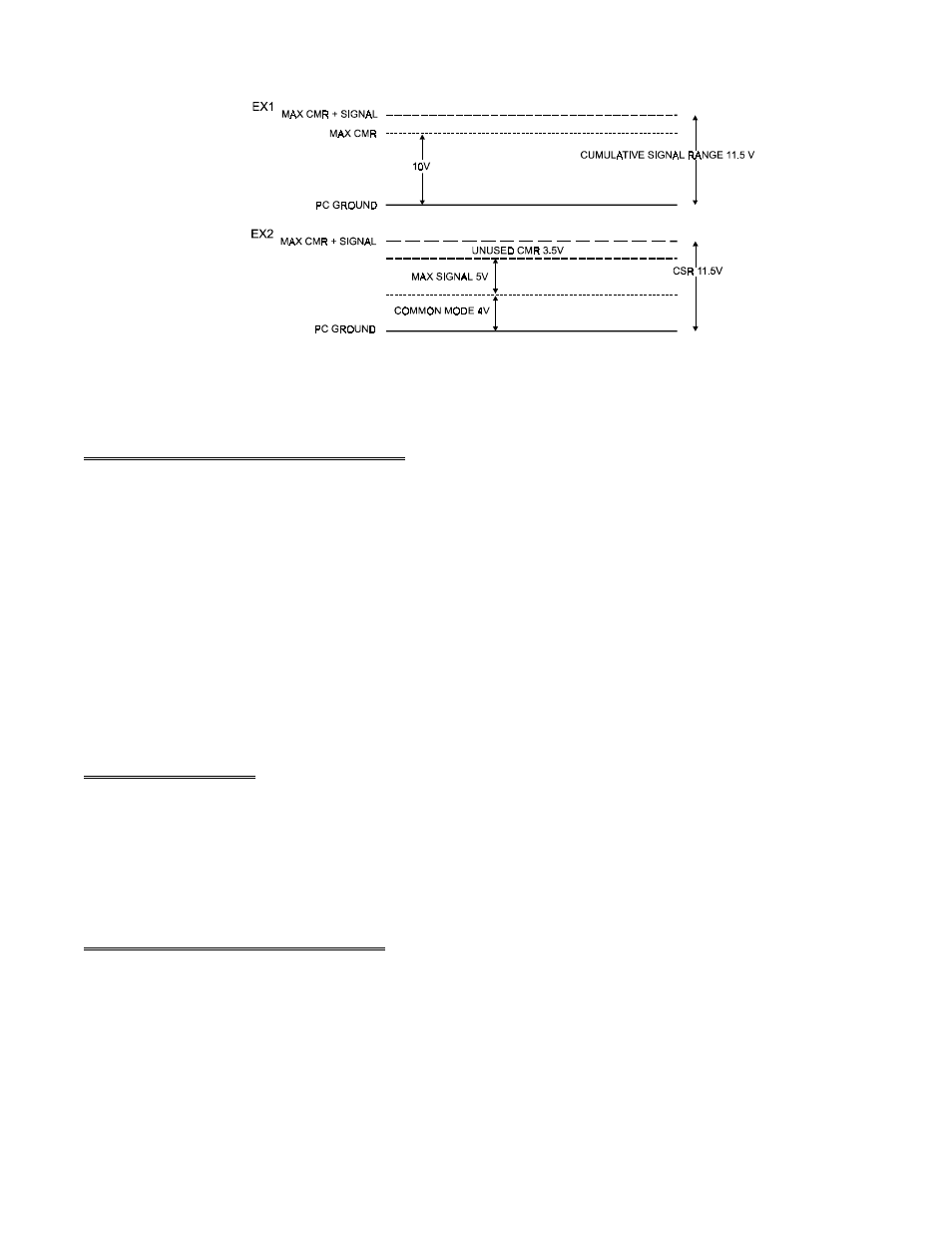Measurement Computing CIO-DAS08-AOH User Manual
Page 28

This specification is illustrated graphically here and will be referred to as Cumulative Signal Range (CSR).
Most manufactures of A/D boards specify the CMR directly from the component data sheet, ignoring the effect of the board
level system on that specification. A data sheet of that type might claim 10 volts of CMR. Although this is a factual
specification and the designer of the board (or other EE) would be able to translate that into a systems specification, most A/D
board owners are confused or mislead by such specs.
8.4 COMMON MISUNDERSTANDINGS
The CMR specification of a differential input is often confused with an isolation specification, which it is not. It makes sense.
doesn't it, that 10 volts of CMR is the same as 10 volts of isolation? No. The graph above shows why.
Also, failure to specify the common mode plus signal system specification leads people to believe that a DC offset equal to
the component CMR can be rejected regardless of the input signal voltage. It cannot as the graph above illustrates.
When is a differential input useful? The best answer is whenever electromagnetic interference (EMI) or radio frequency
interference (RFI) may be present in the path of the signal wires. EMI and RFI can induce voltages on both signal wires and
the effect on single ended inputs is generally a voltage fluctuation between signal high and signal ground.
A differential input is not affected in that way. When the signal high and signal low of a differential input have EMI or RFI
voltage induced on them, that common mode voltage is rejected, subject to the system constraint that common mode plus
signal not exceed the A/D board's CSR specification.
8.5 GROUND LOOPS
Ground loops are circuits in which the signal ground and the PC ground are not the same. Ground loop inducing voltage
differential may be a few volts of hundreds of volts. They may be constant or transient (spikes). A differential input will
prevent a ground loop as long as the CSR specifications is not exceeded.
If ground differences greater than the CMR are encountered, isolation is required.
8.6 USE OF SINGLE-ENDED INPUTS
Why use single ended inputs? First, single ended inputs require fewer parts so they cost less. On an A/D board, the parts cost
to go from 16 single ended channels to 16 differential channels is small so that cannot be the reason. The real reason is
connector space. Single ended inputs require one analog high input per channel and one LLGND shared by all inputs.
Differential inputs require signal high and signal low inputs for each channel and one common shared LLGND.
Single ended inputs save connector space, parts cost and in all cases where there is no common mode voltage or EMI/RFI
they work just as well as differential inputs.
24
